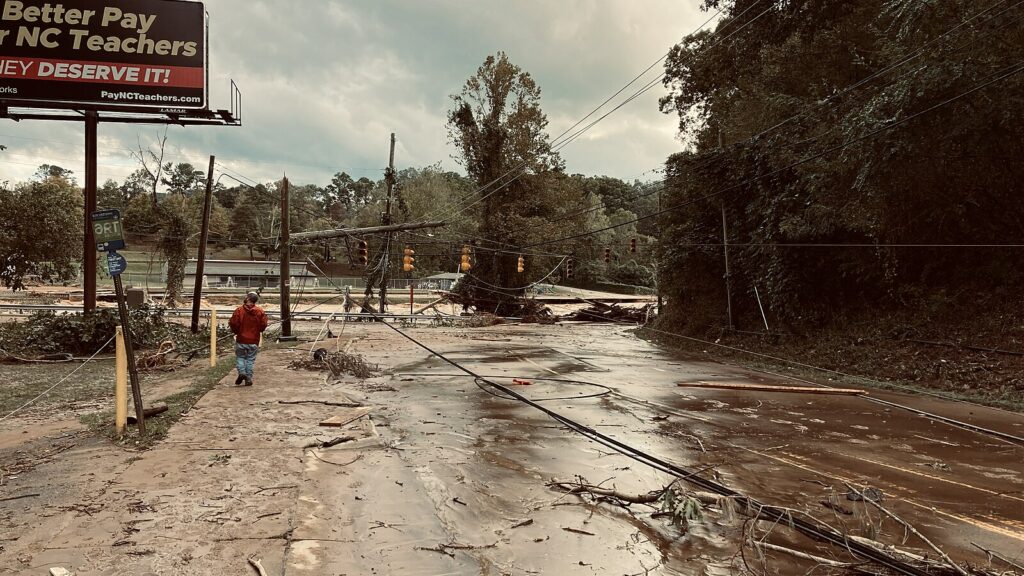In the aftermath of Hurricane Helene, keep in mind that protecting indoor air is a key part of safe flood recovery.
Flooding, storm surge, and wind damage from hurricanes can introduce new hazards indoors and worsen existing ones. Flood waters can carry biological and chemical contaminants indoors, and standing water and wet materials can become a breeding ground for viruses, bacteria, and mold. Exposure to these contaminants can cause disease, trigger allergic reactions, and continue to damage materials long after the flood. Learn more about Floods and Indoor
Air Quality.
EPA’s Flooded Homes website, which is also available in Spanish, features short videos with step-by-step guidance on how to safely clean up your home. You can also search for answers to many of your questions about flooded homes using the webpage’s search bar and by visiting the Frequent Questions about Flooded Homes.
Stay Safe When Cleaning Up
Who should stay away – Children, people who are pregnant, and those with breathing problems like asthma or who have weakened immune systems should stay away from moldy sites and should not participate in flood cleanup.
Personal Protective Equipment – Flood cleanup can be difficult and dangerous work.If you decide to do the cleanup yourself, wear personal protective equipment(PPE) to protect your health including:
- N-95 respirators
- Goggles (without vent holes)
- Long pants
- Long-sleeve shirts
- Protective gloves
- Boots or work shoes
Be aware of the risk of electrocution – Do not touch electrical equipment if itis wet or if you are standing in water. If it is safe to do so, turn off theelectricity to prevent electric shock. Fuel-powered, portable generators – Fuel-powered portable generators produce deadly carbon monoxide (CO) gas.
You cannot see or smell CO, but it could kill you in minutes if you breathe it in. Operate fuel-powered, portable generators safely. Only use generators OUTSIDE and at least 20 feet away from buildings. NEVER use a fuel-powered portable generator inside your home, garage, shed, or similar enclosed areas.
Clean and Dry Everything that Got Wet
Dry your house completely – Drying can take a long time, usually several days to weeks. Keep the air moving with open doors and windows. If you have power, set up fans, dehumidifiers, or heaters throughout the house to speed up the drying process. Learn more about how to dry your home completely.
Water-soaked items and debris – You can usually clean and dry materials that do not soak up water. You should throw away materials that soak up a lot of water and can’t be cleaned and dried.
Learn more about how to sort water-soaked materials.
Cleaning methods – Avoid stirring up dust or scrubbing surfaces. Clean surfaces gently using a cloth dampened with clean water and detergent. If needed, you can also use an EPA-registered disinfectant or sanitizer on clean surfaces that do not absorb water to kill microorganisms such as viruses, bacteria, and mold.Read and follow all instructions about how to safely use the product. Do not mix chemicals together.
When is Flood Cleanup Complete?
It can sometimes be difficult to tell when a flooded home is completely clean and dry. Some signs to look for include:
- Materials that cannot be cleaned and dried have been removed.
- Essential equipment, such as air handling equipment, has been replaced if needed.
- The house and everything in it have dried completely.
- The remaining surfaces and materials have been cleaned.
After cleanup, there should be no signs of water damage or mold growth. If you still see or smell mold, or experience health symptoms that get worse when you return home, there may be more cleanup to do. Consider consulting a qualified remediation professional for help. Learn moreabout hiring a professional for flood cleanup.
Flood Cleanup Videos
NOTE: If you need Spanish captions, click the CC button on the player to turn them on.
Coming Home
- Before You Enter Your Home
- Entering a Flooded Home
- What to Wear: Worksite Safety
- Tools Needed for Repairing a Flooded Home
Doing It Yourself
- Installing Roof, Window, and Door Tarps
- Removing Standing Water & Mucking Out
- Wall Cleanup and Removal After a Flood
- Floor Cleanup and Removal After a Flood
- Drying Everything Out After a Flood
Protecting Your Health
- Asbestos Tips for a Flooded Home
- Lead Paint Tips for a Flooded Home
- Mold and Moisture Basics
- Generator Safety
Additional Resources
- Creating a Safe Workplace
- First Aid for a Flooded Home
- Things to Keep, Clean, or Remove After a Flood
- Debris Removal After a Flood
Learn More





